Montserrat celebrates its Irish roots
- Published
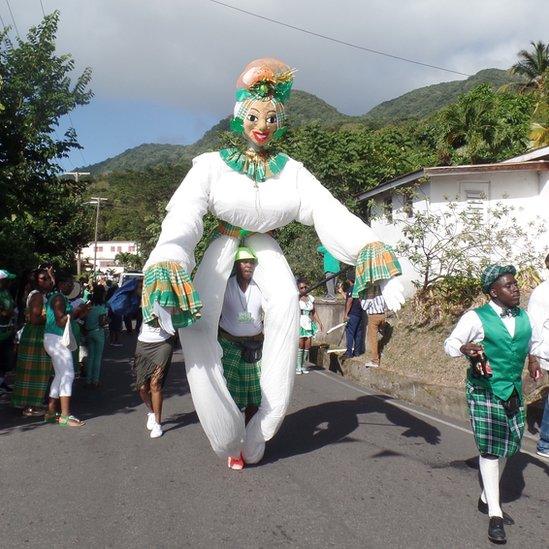
Giant puppets made an appearance at the St Patrick's Day parade
Ask Joe Sweeney about his Irish heritage and he is only too happy to share the snippets of trivia gleaned from family lore.
Perched on the edge of a grave in Montserrat's historic Carr's Bay cemetery, his fingers reverently trace the engraved words just visible on the aged tombstone.
This St Patrick's Day pilgrimage to the final resting place of his paternal ancestor Nathaniel Bass Daly is an annual ritual for Mr Sweeney.
The 87-year-old left the Caribbean's "emerald isle" in 1954 for a new life in England but has diligently returned to his homeland every year for almost four decades.
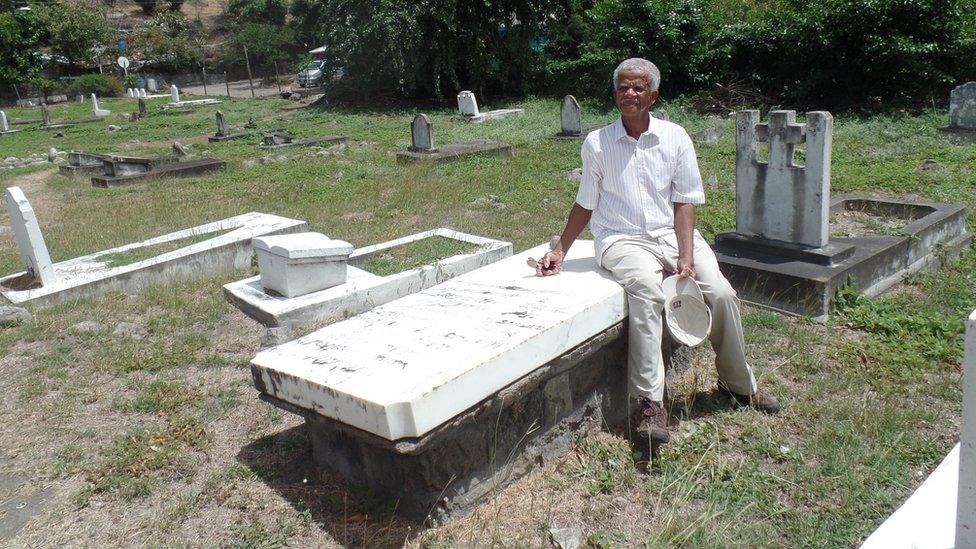
Joe Sweeney, 87, is proud of Irish heritage and his ancestor Nathaniel Bass Daly
The 1793 grave was prepared for Nathaniel's wife Elizabeth, lost at just 31 to an unknown epidemic, and refers only to Nathaniel as her "disconsolate husband".
"But we know he's buried here," Mr Sweeney says. "He insisted his name wasn't put on the stone because he didn't want to disturb her."
'Feeling the kinship'
The former stonemason is proud of his Irish roots which date back, he says, to the early settlers of the 1600s when the Irish made up the majority of Montserrat's white population as indentured labourers, merchants and plantation owners.
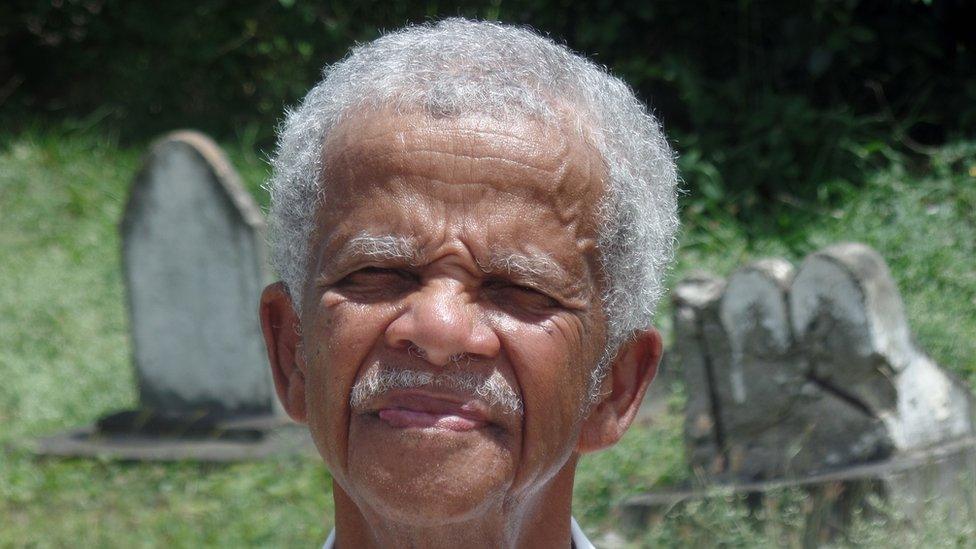
Joe Sweeney has not been to Ireland, but his daughter has researched their family history
"Nathaniel Daly came on an official visit and liked it so much he stayed. He was a sophisticated, respected man. The Daly family owned a lot of land," Mr Sweeney continues, gesturing to the surrounding landscape fringing Daly Hill, one of numerous locations here with an Irish name.
"My daughter went to Ireland to find out about our family; she discovered the Sweeneys were from Donegal and the Dalys from Tipperary."
Mr Sweeney has never been to Ireland himself, something he regrets. But what he regrets more is not extracting further information about his familial roots from his parents before they died.
"You didn't question your parents in those days; they'd say you were cheeky," he says, blue-flecked eyes twinkling.
"For some people, having Irish ancestors is just a fact of life. But I am proud to be one of them; I feel a kinship," he adds.
He is far from alone.
Sea of green
From the shamrock-shaped passport stamp upon arrival at the tiny British territory, to the marking of St Patrick's Day with a public holiday and a week of festivities, Montserrat's Irish heritage is eulogised.

Montserratians enjoy celebrating their Irish connection
The thousands of international visitors who flooded in for this year's celebrations transformed the isle of 5,000 residents, many of whom bear surnames like Riley, O'Brien and Meade, into a vibrant sea of green.
Leprechauns, shamrocks and Guinness are ubiquitous but the revelry features the island's rich Caribbean and African culture too, evidenced in feasts of traditional food such as goat "water" or stew, a "freedom run" in tribute to its slave history, and gospel and soca performances.
Retired schoolteacher Sylvester Browne helped organise Montserrat's first official St Patrick's Day festivities in 1985. Prior to that, the date was marked informally with low-key events in individual villages.

Sylvester Browne helped organise Montserrat's first official St Patrick's Day celebrations in 1985
Mr Browne's own village of St Patrick's was destroyed by the Soufriere Hills volcanic eruption of 1997, part of a two decade-long crisis that forced more than half of the island's erstwhile 11,500 inhabitants to flee.
The volcano remains active to this day, although it has been relatively quiet in recent years. Today, visits to the ruined capital city of Plymouth and Montserrat's "black sand" beaches are a draw for adventure tourists. More than half of the island is still within an exclusion zone.
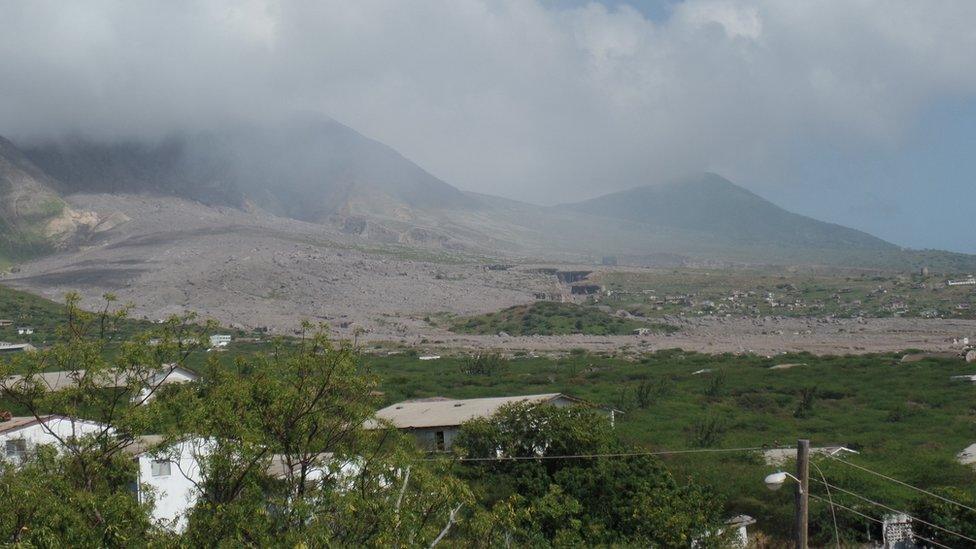
The villages of St Patrick's and Morris were destroyed in less than 30 minutes in 1997
"St Patrick's Day celebrations started because we wanted to commemorate the village more than anything," Mr Browne tells the BBC. "It's evolved in a way we never imagined."
Valued connection
The original plantation-era costumes have stood the test of time - and appeared sporadically in this year's parade, alongside garb in the green, white and marigold national tartan, masquerade dancers, and African-inspired grass skirts and head-wraps.
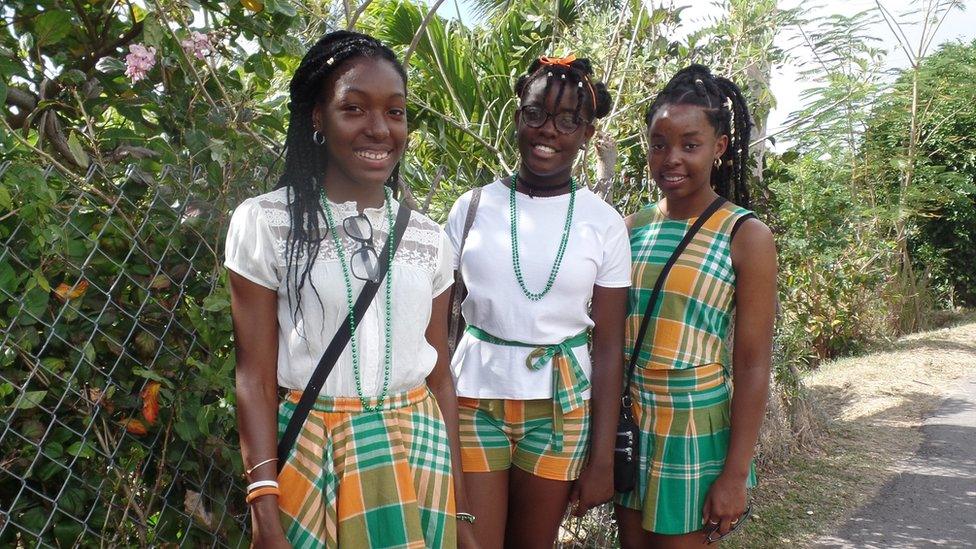
The national tartan was a popular choice for the St Patrick's Day parade
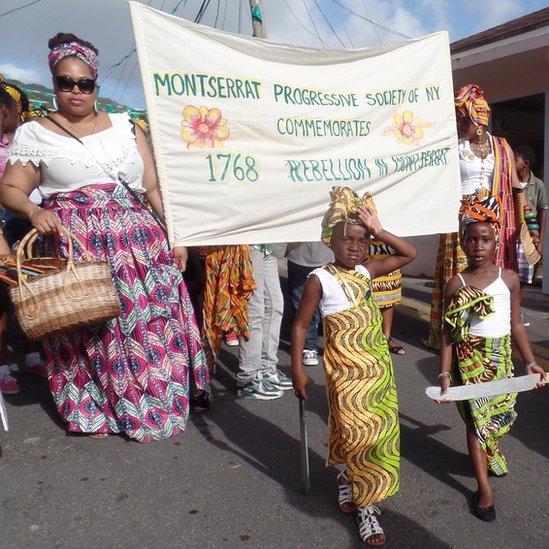
Some groups commemorated events in the island's history
"I'm happy it's grown to be this big but it saddens me that it's become so commercialised," Mr Browne continues. "It would nice if it focussed more on local tradition and what makes us unique."
These days, Montserrat's ethnic melting pot makes it hard to quantify how many people are of Irish descent.
"Some people deny it; others are proud for sentimental reasons, it's a connection they value," Mr Browne explains.
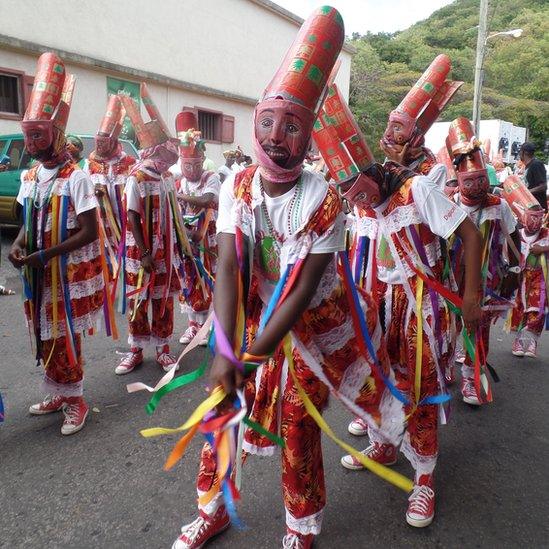
Some of the costumes bear little resemblance to those worn at parades in Ireland
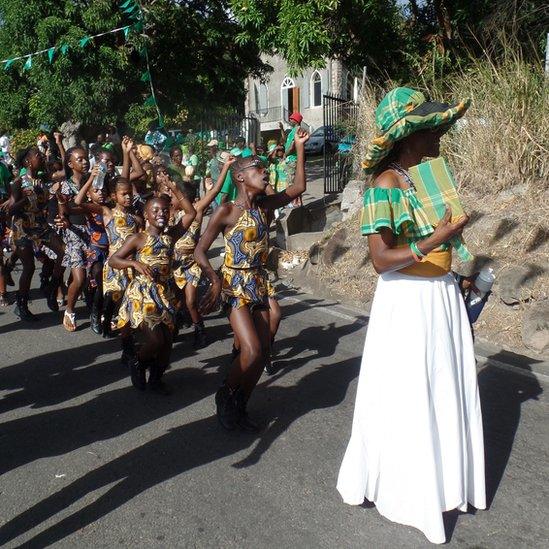
Spirits were high at the parade in Montserrat
"St Patrick's Day is a nice way to showcase the island to visitors; some people are still not certain how safe it is. It's also great to see so many Montserratians return home for it."
Vince Greenaway was one of more than 1,000 Montserratians living overseas to attend the 17 March parade.
"Last year my buddies back home called me in Canada to tell me I was missing out," he says, laughing.
"I promised them I would be here this year; it's wonderful to see people I haven't seen in years."